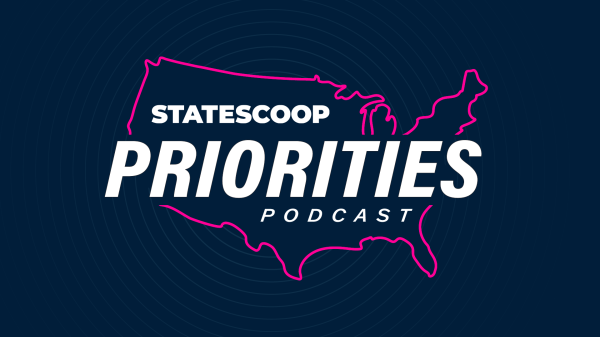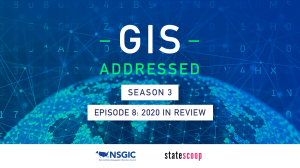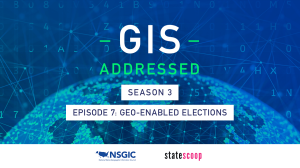
As census deadline looms, GIS leaders seek elections systems upgrades
Across the nation, officials overseeing geospatial information systems are looking to digital-mapping data to make their elections more efficient and fair. But time is running out to make that a reality as deadlines for the 2020 census approach.
Much of this work is happening through a project called Geo-Enabled Elections, which is led by the National States Geographic Information Council and funded through a 2017 grant from the Democracy Fund Voice, a nonprofit that promotes healthy democratic governance.
Through the initiative, state GIS leaders are working to add geospatial data to existing election systems. On a new episode of StateScoop’s GIS Addressed podcast, leaders from state government, NSGIC and Democracy Fund Voice say states need GIS in their election systems now. They also say that waiting until after the 2020 census would postpone needed upgrades in how precincts are drawn and how voters receive correct ballots until 2030.
Tammy Patrick, senior adviser to Democracy Fund Voice and a former election official for Maricopa County, Arizona, says the 2020 census is a major deadline that all election officials should be watching. By including a GIS-enabled layer in state election and voter databases, she said, elections officials can draw precincts more fairly.
“We need to make sure that as many states adopt a geo-enabled elections kind-of project and best practices prior to the next census,” Patrick says. “Otherwise, we’re going to have to wait another decade, really, to be able to have the same sort of impact on the layers of government around the country.”
In the years following the 2010 census, former Utah geographic information officer Bert Granberg says he worked “extensively” with his state’s elections director to ready its election and voter database for GIS. Around the time this work was completed in 2012, Utah became the first state to transition away from a traditional database of voter registration records to one supported by GIS.
“[We used] GIS to map precinct boundaries, but also to locate voter addresses and establish geographic coordinates for every voter in the state,” Granberg says.
The pairing of addresses with coordinates is especially important, he notes on the podcast.
“It’s really all about, in each state, building a statewide map of precinct boundaries and keeping that current as things like city boundaries change,” Granberg says. “Elections databases have always had addresses — that’s how humans best relate to locations on the Earth — but machines work best in geographic coordinates. Being able to translate between addresses and geographic coordinates is an essential need for geo-enabling an elections system.”
Jamie Chesser, NSGIC’s program director for the geo-enabled elections project, says there’s a “thirst” for this project, which is now in the second and final year of its grant cycle.
“I think that the excitement and motivation of the project team and those that are participating is great,” Chesser says. “We’re going to power through this grant year and at the end have a really solid set of best practices that we will be able to share with the community to help integrate GIS within elections.”
On the podcast:
- Jamie Chesser, program director, National States Geographic Information Council
- Tammy Patrick, senior adviser, Democracy Fund
- Bert Granberg, director of analytics, Wasatch Front Regional Council and former director of Utah’s geospatial information office
- Jake Williams, associate publisher and director of strategic initiatives, StateScoop
Things to listen for:
- The Geo-Enabled Elections project brings together “folks in academia, the GIO of the state and GIS officials, the state election directors, nonprofits and federal agencies,” Chesser says.
- Patrick, who was formerly an election official in Maricopa County, Arizona, says the county leaned heavily on GIS. When she began looking at election databases and systems at the national level, however, she found most states and jurisdictions didn’t have those tools at their disposal.
- Political tensions and discord make changes to election systems and policies “a pretty ripe situation for things not to go well,” Patrick says.
- Utah’s move after the 2010 Census to a GIS-enabled election systems was potentially prompted by a state legislator who was found not to be living in his district. He resigned from his seat, but questions remained about how the state tracked precinct and district boundaries.
- At the end of 2018, the geo-enabled elections project released a report on their progress so far and where it was headed next. In February, the group released survey data about the status of Geo-Enabled Elections nationwide.
GIS Addressed is a podcast from StateScoop and the National States Geographic Information Council about the role of geographic information systems in government.
In addition to listening to this podcast and other StateScoop podcasts on StateScoop.com, you can now subscribe on iTunes and have episodes delivered directly to your smartphone’s podcasts app when new episodes are released.


